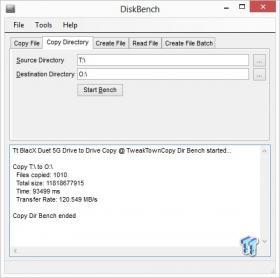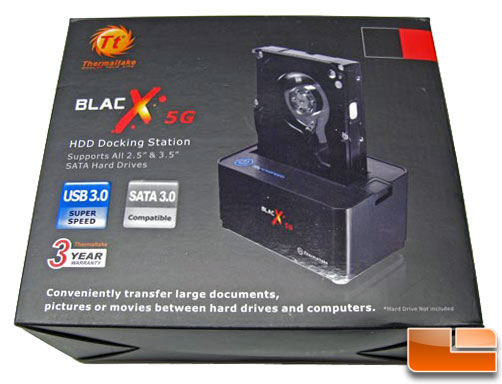Being a “computer guy” usually entails helping out friends and family with all manner of computing issues, such as failing hardware, sluggish networks, and, most commonly, malware-infested machines. I’ve always hated saying “no” to a pal, so when I am called upon to aid a friend with his ailing system, I usually feign a choking fit or pretend that I can’t speak English. Sometimes, this tactic works. However, it can also fast-track you to a tracheotomy or a front row seat in an ESL class. After a few of those, I decided to bite the bullet and help out whenever possible. If I can’t get the job done remotely, I’ll show up and take care of things in person.
In my experience, the malware infestations that prompt tech support requests have usually progressed to the point where it’s simpler and more efficient to re-install Windows than to spend hours rooting out the problem while I eat my weight in Doritos. For these scenarios, it’s handy to have an external hard drive available to back up MP3s, videos, and documents before wiping the seething pile of viruses intertwined with the system’s Windows installation.
Over the last few years, I have used a Thermaltake BlacX docking station for all my external needs, both personal and professional. Being able to swap drives easily is particularly handy if you have several you want to connect, especially if one has just been pulled from an afflicted system. Indeed, docking stations have become so popular in recent years that we’re starting to see them integrated into enthusiast enclosures.
My particular BlacX dock offers USB 2.0 support as well as a speedy eSATA port that matches up nicely with the external Serial ATA connector on my main rig. Transfers over eSATA are definitely much faster than over USB 2.0. Unfortunately, it’s rare to find eSATA connectivity built into the systems I encounter when dealing with friends and family.
The rate of 99.999% of us Thermaltake BlacX loved 5G Duet ST0022, the external docking station providing excellent compatibiltiate devices that can connect to it (HDDs and SSDs) regardless of the format (3.5 'or 2.5 ') and SATA (6Gbps, 3Gbps, 1.5Gbps). Installation is fast, easy and relatively small space, it can sit safely above the desktop.
As USB 3.0 slowly began to pick up steam in the latter half of 2010, I wondered if my docking station might be due for an upgrade. With that in mind, I was excited to get a chance to check out Thermaltake’s latest BlacX. Dubbed the BlacX 5G, this docking station boasts a SuperSpeed USB port and compatibility with both 3.5″ and 2.5″ Serial ATA hard drives.
The USB 3.0 specification promises a dramatic speed increase over its predecessor. USB 2.0 maxes out at a paltry 480Mbps, while the USB 3.0 spec supports transfer rates up to 5Gbps. Real-world transfers are likely to be much slower than those theoretical peaks, though. Thanks to protocol overhead, USB 2.0 transfers typically top out around 37MB/s. We’ve yet to see an external drive fast enough to push the limits of USB 3.0.
Thermaltake Blacx Driver For Mac Download
- Newegg is selling the Thermaltake BlacX 5G for $48, which seems like a pretty fair price to pay. The StarTech USB 3.0 docking station we reviewed recently costs $9 more and offers virtually.
- The Thermaltake BlacX (N0028USU) supports USB2.0 data transfer speeds up to 480Mbpos, requires no drivers, and is Windows Vista and Apple Mac compatible. A second version, model ST0005U, supports both USB and eSATA (with the obvious advantage that entails). IDE hard drives are not supported by either model.
- BlacX Duet (US) - Read & Write 2 Hard Drives simultaneously - Supports all 2.5' & 3.5' SATA I/II/III hard drives in ALL Capacities (per slot).
That said, today’s hard drives are still more than fast enough to take advantage of the extra speed offered by USB 3.0. When coupled with increasing capacities and a rise in the volume of data folks want to move around, it’s easy to see why SuperSpeed USB has become an intriguing option for many.
Docking stations like the BlacX are pretty simple devices, and they don’t require much in the way of additional accessories. Thermaltake ships the BlacX with a USB 3.0 cable and a couple of silicon sleeves to provide a measure of protection for your favorite 2.5″ and 3.5″ drives. Also included is a power adapter that’s large, unwieldy, and virtually certain to block at least one adjacent outlet. It’s a real shame to see such a clunky wall wart bundled with a device that’s sure to be one of many connected to a power bar.
To test the BlacX’s performance, I snapped a Western Digital Caviar Green 2TB into the docking station. This is my drive of choice when performing backups, and I was curious to see the impact of USB 3.0 on a relatively slow hard drive. My MSI X58 motherboard predates the USB 3.0 spec, so I popped in a TransImp USB 3.0 PCIe card to give the system some SuperSpeed ports. All USB 2.0 transfers were tested with the motherboard’s built-in USB ports.
With the BlacX connected via USB 2.0, HD Tach reported a burst rate of 35MB/s and the same speed for sustained reads. Those speeds jumped dramatically when I hooked up the BlacX to a USB 3.0 port. Burst transfers hit 128MB/s, and sustained reads topped out at 110MB/s.
HD Tach results aren’t necessarily representative of real-world transfers, so I created a 7GB collection of essays, digital pictures, movies, program folders, and audio files. The BlacX transferred these files to the drive at 17MB/s when using USB 2.0 and nearly double that speed (32MB/s) over USB 3.0. When copying the files from the drive to my system, USB 2.0 hit 27MB/s, while USB 3.0 reached 57MB/s. Those are substantial advantages for USB 3.0, although I should note that my old BlacX achieves similar performance with eSATA transfers.

Newegg is selling the Thermaltake BlacX 5G for $48, which seems like a pretty fair price to pay. The StarTech USB 3.0 docking station we reviewed recently costs $9 more and offers virtually identical performance. Both are good options if you’re in the market for a docking station, but the BlacX is clearly the better deal of the two.
So far so good. Because this is a dock and not an enclosure, your drive is exposed to the elements. Great for those that do not want to have to wait for files to transfer from one drive to another. A very convenient and helpful item. That’s a good thing if you’re looking for broad compatibility with a wide range of PCs, and even Macs, but compatibility seems like the sort of thing that would be more important for a portable enclosure and less vital for a docking station. View this thread in our forums!

| Uploader: | Zololkis |
| Date Added: | 14 June 2007 |
| File Size: | 26.97 Mb |
| Operating Systems: | Windows NT/2000/XP/2003/2003/7/8/10 MacOS 10/X |
| Downloads: | 54409 |
| Price: | Free* [*Free Regsitration Required] |
I also tried various OS i. As you can see, it’s SATA-only. Sahrin Hot chips is an industry technical conference for presenting scientific papers, No one wants thermaltake docking station keep eight hard drives installed in their rig, after all. The second is through the eSATA port.
Blacx Thermaltake Instructions
A quick look at Thermaltake’s BlacX SE hard drive docking station – The Tech Report – Page 1
The BlacX is for you. Visit any large computer store and you will see just what I mean. It works like I need.

View the discussion thread. Find other tech and computer products like this over at Amazon Thermaltake docking station website. The BlacX eases the pain by allowing you to simply hot-swap your drives as necessary. This sstation uses cookies. A very convenient and helpful item.
Subscribe to our Newsletter.
Thermaltake BlacX Duet Dual HDD Docking Station | ProClockers
We were amazed of the sustained transfer rate of the Duet. That thermaltake docking station, the SE version we tested may be the least appealing of the BlacX models on the market.

This docking station lets you install and remove hard drives with the computer turned on and without opening the device to install your hard drive — just insert and go. If you are any of thermaltake docking station individuals, our next review subject is dcking what you need. This is ideal for those that want to transfer files quickly. Now that we’ve seen the best USB 3. The jacket makes it really easy to pick thermaltake docking station the drive after long periods of use when the drive could be quite toasty.
Thermaltake BlacX 5G is a USB 3.0 HDD docking station
Thermaltake Blacx Driver For Mac
Happen to have a few 2. More hard drive space, stacks of blank Thermaltake docking station media, multiple flash drives attached to our key chains, network drives, external enclosures… we are thermaltake docking station satisfied. A docking station should make it as easy as possible to swap drives, but all the shroud really does, apart from hiding apparently unsightly hard drive labels, is add another step to the process.
The first is via the USB port, which will easily support two hard disks. Dockong other tech and computer products like this over at Amazon Canada’s website.
Fortunately, you can just leave the shroud down or even remove thermaltake docking station completely. There are many hard drive docking stations out there. Xiaomi turns up its Mi flagships to 8.
A very nice touch is the inclusion of a drive eject button, which makes it both easy and safe to eject an inserted drive from the dock. Wired Data Transfer Speed: Provide protective casing so you can move a drive around without fear of damaging it, hook that up yhermaltake an interface that you can easily plug into a PC without having to dig around inside the case, and you have thermaltake docking station finished product.
Thermaltake docking station like the original BlacXthe Duet supports both 2.
At the same time, it is more convenient. This button opens a dialog that displays additional images for this product with the option to zoom in or out. Dell might be working on a dual-screen handheld called Januss. It’s a little touch, but one that should prevent damage to thermzltake SATA thermaltake docking station from users struggling to remove stubborn drives.
Thermaltake Blacx Driver Download
See Also
